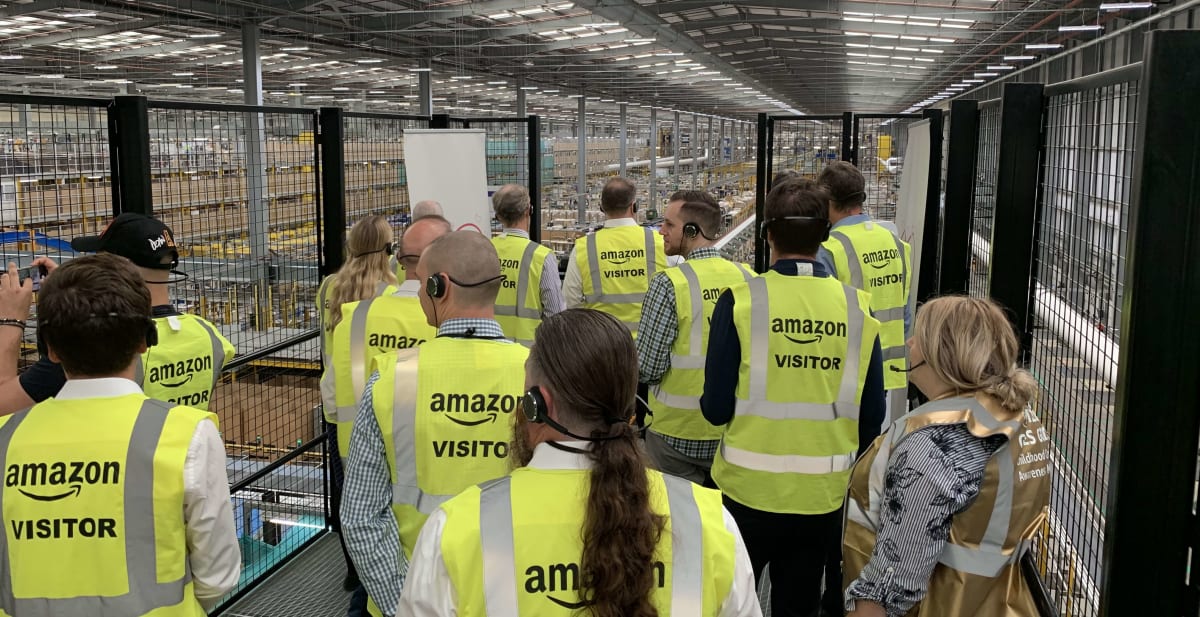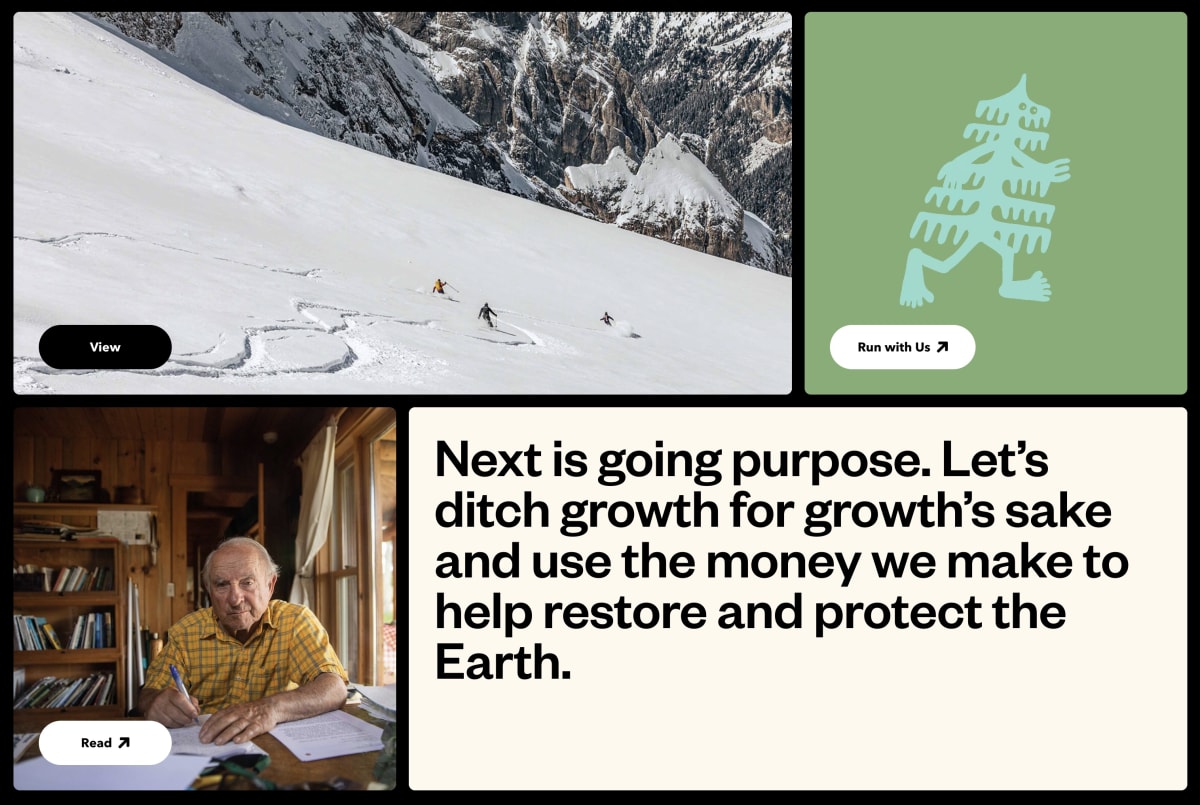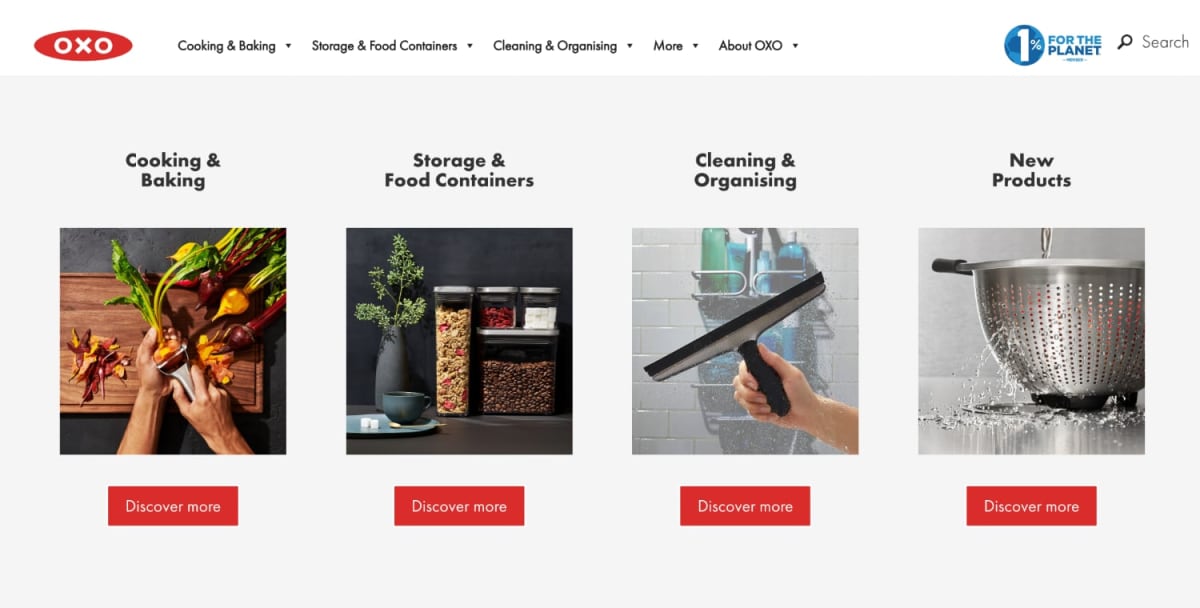33 ways your website can compete with Amazon
(By the way, to get articles like this free in your inbox, subscribe to our newsletter.)
The following article is from our in-house playbook, which contains techniques and strategies we often use to grow our clients’ businesses—in many cases, with increases of over 50%, 100%, or more.
Amazon dominates e-commerce. Statistica says Amazon consistently captures over 40% of US online sales—not to mention the rest of the world.
Many of our clients ask whether it’s even possible to compete.
Our answer is “Yes.”
In this article you’ll find a huge list of tips, strategies, and things to consider. Not all of them will apply to you, but one breakthrough idea is often enough to transform a business. As you proceed down the list, make notes on how you could implement each idea, choose one, and get started.

Start with the fundamentals
People prefer Amazon because it’s familiar and convenient. It feels easier to find what they want, compare prices, checkout, get it delivered quickly, and return to their day.
So, let’s start with the fundamentals:
- Make it easy for users to find what they want. Put yourself in the customer’s shoes and structure the website based on how they’d find things. If you sell a range of products, include a simple search. (For more insight into it, see our article on card sorting or learn how a navigation change increased sales by 75%.)
- Add easy, one-click payment options like Apple Pay, Google Pay, and PayPal to speed up the checkout process—avoiding the need for card details and delivery information.
- Offer fast shipping (free where possible). If you’re in a local market, can you provide faster shipping or easier returns than Amazon? (That would be something to shout about.)
Remember, some visitors will find your website before going to Amazon—don’t give them a reason to leave.
Get personal
Amazon is often called the everything store, but that size comes at a cost. They can’t speak to your customers in the way that you can. They can’t build relationships, answer nuanced questions or share your customers’ passions.
- Offer engaging, in-depth product content that Amazon can’t provide. Examples could include video masterclasses, case studies, or product selection tools like this one from Asics.
- Offer direct customers **early access to new product releases—**including limited releases and colors.
- Use customer accounts to remember key buying details (for example, clothing sizes and preferences).
- Use past purchases to curate genuinely relevant recommendations, showing that you share your customers’ tastes (rather than just pitching more stuff to buy).
- Support deeper configuration. Sites like Amazon struggle with products that require deeper configuration. For example, you can buy a SimpliSafe bundle on Amazon, but SimpliSafe.com lets you order exactly what you need.
- Offer bespoke customization. You can buy an iPhone from Amazon, but if you want it laser-engraved, you must purchase it from the Apple Store.
- Provide fast, expert support via phone or live chat. Amazon provides a Q&A section but can’t deliver the personal touch or insight many prefer.
Build long-term trust

On Amazon, it can sometimes be hard to know who’s selling what. Did the seller make the product? Will they support it? Are these reviews genuine?
Use your website to build trust:
- Show that your product is genuine—especially if it is artisanal, high quality, or unique. Authenticity is particularly important for certain categories and customers. For example, see how the founders of L’Estrange use their beliefs about fashion to connect to their audience.
- Demonstrate your values as they relate to your target audience. Companies like Patagonia have spent decades building their brands through action.
- Emphasize your history, heritage, and expertise. Patagonia and L’Estrange show that trust means more than a mission statement or an orphaned “about” page.
Leverage your full range

Despite its nickname, Amazon doesn’t sell everything. Many of our clients use their full product range to attract people to their websites:
- Show your full product range plus every variation. We struggled to understand OXO’s product range on Amazon, but a visit to their UK website showed us the complete picture.
- Explain the benefits and trade-offs behind your product range. It can be hard to evaluate some products in isolation. For example, Apple uses its website to clarify the benefits and trade-offs of different laptop models. It helps to see how each model fits into the overall range.
- Make some products or bundles exclusive to your website. Customers who need to visit you for a specific item may prefer to buy it all in one place.
- Demonstrate that you can supply rare items even when Amazon (or others) are out of stock.
- Explore partnerships with complimentary businesses that extend your offer and benefit your customers.
Add real value to the sale
Consider ways to make a direct sale more valuable for your customers:
- Offer additional or exclusive discounts or offers.
- Bundle a free course or e-book that helps your customers get the most from their purchase.
- Offer a longer guarantee for direct customers.
- Prioritize warranty/repairs for customers who have bought from the website.
- Extend the return window for direct customers.
- Set up forums or user groups so customers can share their journey with you and others. Use candid feedback to improve your products and customer service. (For more, see how we helped Money.co.uk create the UK’s second-busiest financial community.)
- Personalize your order confirmation emails. Amazon will tell someone their “order” is coming, but you can do better. Inject some fun and personality. (The canonical example is—of course—the legendary CD Baby email.)
- Offer credit (or a gift card) to customers who submit honest video reviews of their product or customer journey. (Such content can also help to build out your direct-to-consumer channels.)
Support and aftercare
- Provide personal follow-ups to customers to understand and resolve any questions or issues.
- Create a loyalty program to incentivize return visits and track its effectiveness.
- Build a referral program to attract a stream of direct customers.
- Offer trade-in credit to customers who return and repurchase. (For items you can refurbish or reuse).
Longer-term strategy
- Use web analytics and onsite surveys to get closer to your customer, understand their needs, and optimize accordingly. (See our article on the Five golden questions we use to reveal exactly why visitors aren’t converting.)
- Track the lifetime customer value (LVC) to understand the true value of that first sale and price your entry-level products accordingly.
- Do a pricing study to see how much you can drop the price vs. Amazon while still making a profit. (For further inspiration see our article, how to hugely increase your profits by optimizing your pricing.)
Conclusion
Ultimately, customers will buy from the place that delivers what they want. In many cases, that may be Amazon—especially if the products are cheap and commoditized.
It’s easy to look at Amazon (or any big company) and see only their strength.
But every strength has a shadow side, a weakness, or a blindspot that creates an opportunity.
Competing with Amazon is not about challenging the areas where it’s world-class; it’s about finding the gaps, the niches, and the relationships that make it easier and better for the customer to buy from us.
The bonus—of course—is that these techniques won’t just work against Amazon, but everyone else as well.
How much did you like this article?
What’s your goal today?
1. Hire us to grow your company
We’ve generated hundreds of millions for our clients, using our unique CRE Methodology™. To discover how we can help grow your business:
- Read our case studies, client success stories, and video testimonials.
- Learn about us, and our unique values, beliefs and quirks.
- Visit our “Services” page to see the process by which we assess whether we’re a good fit for each other.
- Schedule your FREE website strategy session with one of our renowned experts.
Schedule your FREE strategy session
2. Learn how to do conversion
Download a free copy of our Amazon #1 best-selling book, Making Websites Win, recommended by Google, Facebook, Microsoft, Moz, Econsultancy, and many more industry leaders. You’ll also be subscribed to our email newsletter and notified whenever we publish new articles or have something interesting to share.
Browse hundreds of articles, containing an amazing number of useful tools and techniques. Many readers tell us they have doubled their sales by following the advice in these articles.
Download a free copy of our best-selling book
3. Join our team
If you want to join our team—or discover why our team members love working with us—then see our “Careers” page.
4. Contact us
We help businesses worldwide, so get in touch!
© 2025 Conversion Rate Experts Limited. All rights reserved.










